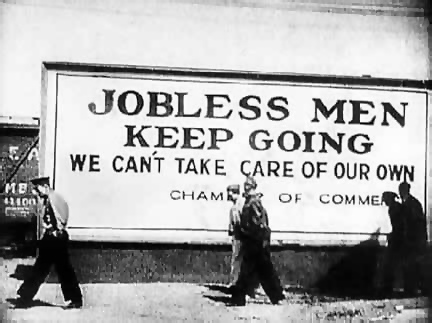Stiglitz Rewrites the Great Depression

Joe Stiglitz's offers in the current Vanity Fair an arresting theory of both the Great Depression and the current economic malaise.
Contra the (now) orthodox view propounded by Milton Friedman and Anna Schwartz, Stiglitz argues that the Depression was not fundamentally a monetary event. Instead, Stiglitz counters, we should think of the Depression as driven by a deeper crisis in the real economy: Between 1890 and 1930, technological advance had rendered most farm labor obsolete. Yet these redundant farmers remained on the farm, supported first by the high farm prices of 1913-1919, then by the easy credit of 1921-1929. After 1929, the credit disappeared--and millions of farmers and farmworkers were ruined and stranded. Unable to earn a livelihood, they could no longer purchase the products of the urban manufacturing economy, pulling the whole economy into depression after them.
In this telling, the collapse of the money supply identified by Friedman and Schwartz as the cause of the (American) Great Depression is reduced a symptom. When the farms failed, their bankers failed. Because monetary contraction did not cause the crisis, monetary stimulus could not redress the crisis. Contemporary economists despairingly compared monetary stimulus to "pushing on a string": the central bank could create bank reserves, but it could not induce bankers to lend or business to borrow at a time when neither saw profitable opportunities.
Again in Stiglitz's telling, the US was pulled out of Depression by the catastrophe of World War II. To wage war, the US government invested massively to develop industrial infrastructure, especially in the West and South. War spending provided the demand for new products; war investment built the plants and ports that absorbed formerly redundant labor. Instead of rescuing the financial system, the government reinvented the real economy. The now-stringently regulated financial system recovered willy-nilly.
You can probably see where Stiglitz is going with this analogy. How should we assess the claim?
- MORE TO COME -

